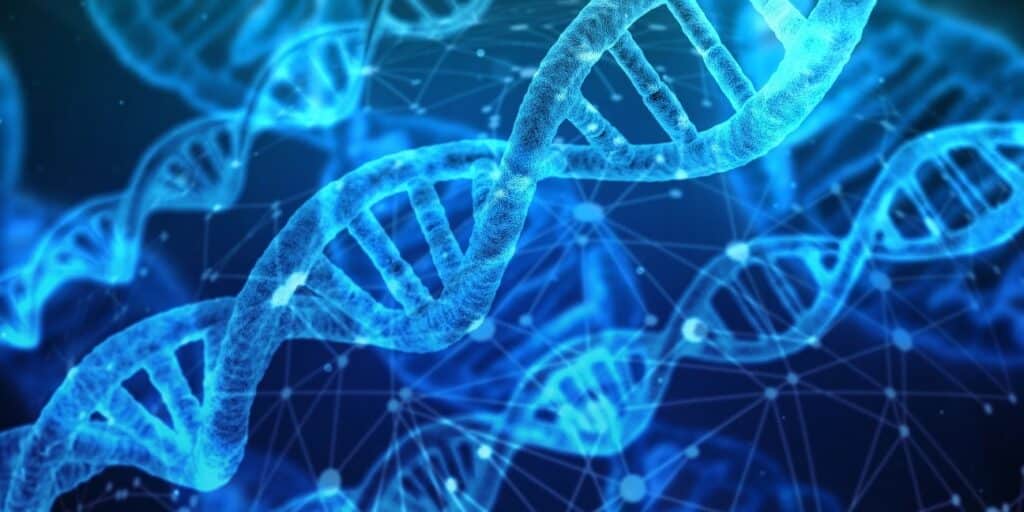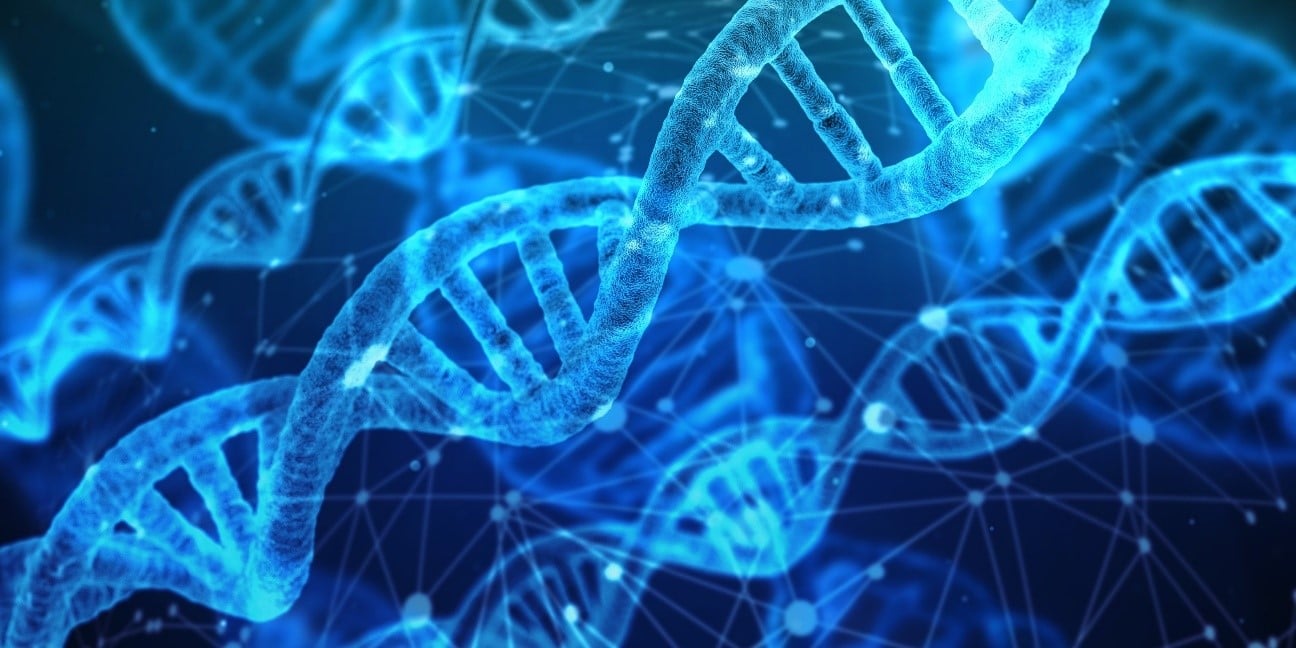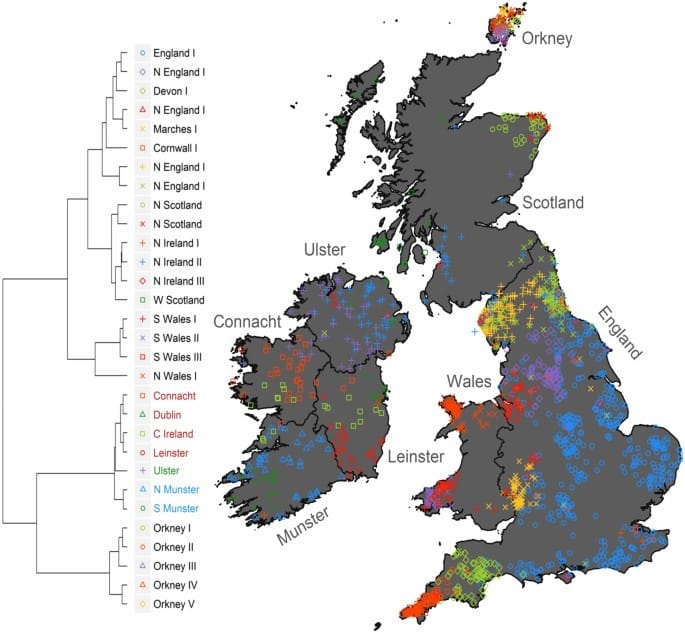Genetic Genealogy
 15
15Dec

Are you, reader, an avid genetic genealogist? Are you a masterful traditional genealogist? Do you appreciate family history, but you don’t do it yourself? Whoever you are and whatever your interests, you have probably heard about Ancestry.com or 23andMe and their DNA tests; you’ve probably discussed someone’s shocking (or not so shocking) ethnicity estimates.
Genetic genealogy has popped up in the family historian’s world and helped break through brick walls like the Kool Aid man, and it’s here to stay. DNA harbors answers to exploratory scientists and curious genealogists’ questions. Traditional genealogy work can be frustrated with incorrect or missing documents. DNA, however, cannot tell you the name or birthdate to whom it belongs. These two tools work harmoniously to reveal the stories of our ancestors and our origins.
Let’s dive into the how DNA is used to predict our heritage. The purpose behind this explanation is not to describe the chemical composition of DNA, but to help the reader visualize what genetic variation looks like on a molecular level.
What are SNPs?
Every human has an almost identical genome; however, we are all unique in looks and behavior. Our individuality is due in part to single nucleotide polymorphisms (SNPs). On a molecular level, these SNPs look like what they sound like, a single nucleotide variation. DNA is made up of molecular building blocks, called nucleotides. They are represented by the letters A, G, C and T.
One portion of a person’s DNA might be sequenced like the following:
ATGCCATAG
Whereas another’s might read:
ATGCGATAG
The SNP between the two sample DNA strands above is indicated in red. One human will have millions of SNPs, and that provides genetic variation between individuals. When DNA is passed from parent to child some of the parent’s SNPs will be passed down. Some SNPs have been passed down for so long that they are associated with a geographical area. Imagine thousands of years ago; if your ancestors lived in Asia, a certain SNP would be passed down from generation to generation until it eventually came to you and others who also descended from your same area. This SNP can then be used to identify your genetic heritage. This process is exactly how “Ethnicity Estimates” are formed.
SNPs and Reference Populations
Ethnicity estimates are based on a reference population. Reference populations are developed by collecting DNA from a large number of individuals who have a proven 4-8 generation pedigree in the specific region. The DNA from the individuals is sequenced and the SNPs are identified for that reference population. Each genetic genealogy company creates their own algorithms and slightly different reference populations with varying geographic regions. That is why, if you’ve tested with more than one company, your ethnicity estimates might be different. And, while ethnicity estimates are interesting, they do not provide exact data or substantial evidence for creating pedigrees. For ethnicity estimates to be an effective stand-alone tool, there will need to be reference populations with higher resolution.
Fine-scale Populations
In 2017 Edmund Gilbert et al. took reference populations strides further by not just finding SNPs associated with continents or countries, but with the sub regions within countries. The figure below includes Scotland, England, Wales, and Ireland and their genetic clusters identified by different shapes. The red, green and blue names are seven Gaelic clusters identified by Gilbert et al through fine-scale population research.

The seven clusters identified within Ireland were tested for their ‘genetic relatedness’ and found to be significantly different. In other words, the groups identified are unique enough to be distinguished through genetic testing. They could be used in reference populations and then as ethnicity estimates for Irish descendants. Additionally, the geographical borders that accompanied these unique clusters followed the geopolitical borders from medieval history.
This research identifying the Gaelic clusters of Ireland was performed by a scientific laboratory at the Royal College of Surgeons in Ireland, meaning the data is not available on any of the popular DNA testing websites. But, can you imagine if Ancestry, 23andMe, MyHeritage, etc. begin to implement this kind of fine-scale research? You will not just be told that you’re 23% Irish, but rather you will know exactly what area of the country your DNA originates from. Combine that with Ancestry’s new tool that identifies which segments of DNA are paternal/ maternal.
It is realistic to imagine a future where a DNA test will tell you something like this: “You are 4% Gaelic Irish from the Dublin region on your paternal grandfather’s side”. Fine-scale population research is worth pursuing in other regions of the world because it provides detailed genetic data that gives insight into world and (potentially) ancestral history. From a genealogical perspective, this could make ethnicity estimates more than a selling point. This approach might not be capable of surveying nomadic societies, but in regions that it is possible to pursue, it should be.
Imagine the Future
Imagine that you are trying to find where your great-grandfather immigrated from. If fine-scale population research was used, you could potentially know what sub-region of a country he originated from through DNA. Of course, this isn’t always necessary if there are records to tell you where he is from, but in cases where the records are sparse and in countries that do not keep records, DNA will be vital in extending pedigrees.
The massive undertaking of recreating the human pedigree will only be completed with a compilation of the tools and resources that are available. Pedigrees are expanded through a compilation of resources (ie difference record types). With the advances in DNA sequencing, we can now add another resource. Just as traditional family history work is discovered by a combination of birth, death, census, probate and other records, genetic genealogy pedigrees have the potential to be created with the use of X & Y chromosomes, SNP data and fine-scale population studies.
The future of genetic genealogy is bright; implementing it in research has and will continue to illuminate our past. The genetic genealogists of Price Genealogy can help you explore your DNA ancestry, prove or disprove lines, and break through long-standing brick walls.
By Heather
To read more about the Irish fine-scale population study research: Gilbert E, et al. (2017) The Irish DNA atlas: revealing fine-scale population structure and history within Ireland. Sci Rep 7(1):17199. https://doi.org/10.1038/s41598-017-17124-4 Image from this website.
Introductory image: Geralt, CC0, via Wikimedia Commons / https://upload.wikimedia.org/wikipedia/commons/c/c6/DNA_strands.jpg
